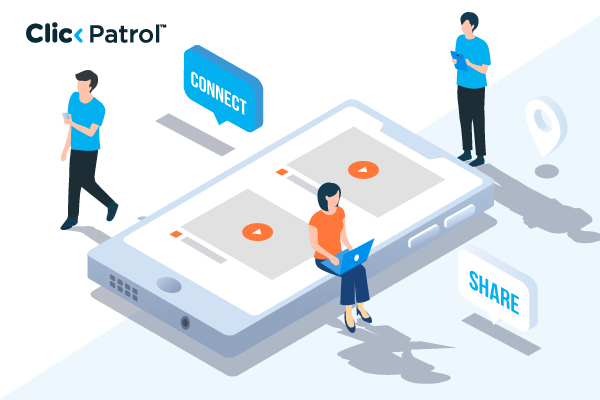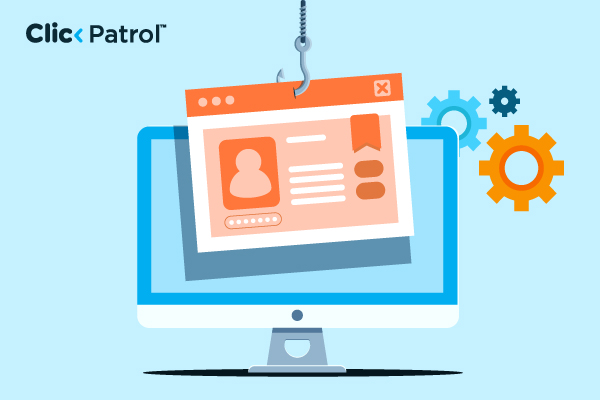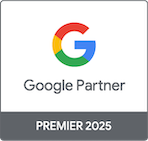
7 Proven PPC strategies to maximize ROI and cut ad spend in 2025
Abisola Tanzako | May 08, 2025

Table of Contents
- Understanding PPC: How it works and why it matters
- 7 PPC strategies to maximize ROI and minimize ad costs
- 1. Choose the right keywords to reduce costs and improve conversions
- 2. Write high-converting ad copy
- 3. Optimize landing pages for higher conversions
- 4. Use advanced audience targeting and retargeting
- 5. Monitor and optimize PPC campaign performance
- 6. Reduce wasted ad spend
- 7. Expand beyond Google Ads: Multi-platform PPC
- How to prioritize these PPC strategies based on your goals
- Case study
- Recommendations for maximizing PPC ROI
- How to leverage AI and automation for PPC campaigns
- Turn your PPC clicks into profits
- FAQs
Marketers waste an average of 25% of their PPC budget due to poor campaign strategy.
However, poor targeting and irrelevant clicks can waste up to 76% of ad budgets.
Without well thought out PPC strategies, businesses lose thousands to unconverted traffic. Data-driven improvements can boost results.
High-intent keywords increase conversion rates, clear CTAs enhance click-through rates (CTR), and faster landing pages decrease drop-offs.
This article examines seven actionable strategies to enhance return on ad spend (ROAS), minimize inefficiencies, and scale your paid campaigns.
Understanding PPC: How it works and why it matters
Pay-per-click (PPC) is a digital advertising model where businesses pay for each click on their ads, offering immediate online visibility.
Advertisers bid on keywords, and search engines rank ads based on bid amount, relevance, and user experience. Winning ads appear on search result pages.
PPC is valuable for its:
- Instant exposure on search engines,
- Precise targeting by location, behavior, and more,
- Budget control, as advertisers only pay per click,
- Analytics that help refine and improve campaign performance.
7 PPC strategies to maximize ROI and minimize ad costs
Seven (7) PPC strategies to maximize ROI and reduce ad costs include:
1. Choose the right keywords to reduce costs and improve conversions
1a.) Focus on high-intent keywords: Instead of broad keywords, target long-tail, high-intent keywords with a high buying intent. Example:
- Broad keyword: “Socks” (high competition, low intent)
- Long-tail keyword: “Buy black running socks for men online.” (low competition, high intent)
1b.) Use negative keywords to reduce wasted PPC spend: Negative keywords keep your ads from appearing for irrelevant searches. For example, if you sell luxury shoes, block the following searches:
- “Cheap shoes.”
- “Free shoes.”
1c.) Perform frequent keyword audits: Use Google Ads Keyword Planner, Ahrefs, or SEMrush to review what keywords convert sales. Cancel underperforming ones to recover wasted ad expenses.
2. Write high-converting ad copy
1a.) Create attention-grabbing headlines: Your advertisement headline should be concise, benefit-oriented, and keyword-friendly.
- “60% Off Premium Running Shoes: Limited Time Only!”
- “Boost Sales 2X With AI-Powered Marketing: Try Free!”
2b.) Utilize persuasive call-to-actions (CTAs): CTAs should generate a sense of urgency and prompt action. Examples:
- “Get Your Discount Code Now”
- “Claim Your Free Trial Today”
2c.) A/B test your ads: Run several rounds of ads to test various headlines, CTAs, and descriptions.
3. Optimize landing pages for higher conversions
3a.) Ensure landing page relevance: Your landing page should align with your ad. For example, if your ad promotes a 50% discount, ensure the landing page highlights the same deal.
3b.) Optimize page load speed: Slow pages are bounced from more. Optimize images, use a fast hosting service, and test your speed on Google PageSpeed Insights.
3c.) Add strong CTAs and trust signals: Boost conversions with:
- Strong CTAs (“Get Started Now”)
- Trust Badges (Secure checkout, money-back guarantee)
- Customer Reviews & Testimonials
4. Use advanced audience targeting and retargeting
a.) Segment your audience for more effective targeting with:
- Demographics (Age, Gender, Income)
- Geographic Location (City, State, Country)
- Device Type (Mobile vs. Desktop users)
b.) Retarget non-converting users: Retarget shoppers who abandoned their carts using retargeting ads. On average, retargeting ads increase conversions by 70%.
c.) Use lookalike audiences: Utilize Facebook and Google Ads’ Lookalike Audiences to target new potential buyers who are similar to your existing customers.
5. Monitor and optimize PPC campaign performance
a.) Track key PPC metrics: Regularly analyze:
- Click-through rate (CTR): How often people click your ads
- Conversion rate: How many people take an action
- Cost per conversion (CPC): The cost per conversion
- Quality score: How Google values your ad relevance and CTR
b.) Optimize bidding strategies: Try out different bidding strategies:
- Manual CPC: Full bid control
- Improved CPC: Bids are dynamically optimized based on conversion probability
- Target ROAS: Bids are automatically optimized to hit a target return on ad spend
c.) Use AI-driven solutions to automate: Google Smart Bidding and third-party solutions like Optmyzr automate bid optimization, reducing ad costs and driving maximum conversions.
6. Reduce wasted ad spend
a.) Stop low-performing ads and keywords
- Mark low-performing ads and pause them to reallocate the budget to more-converting campaigns.
b.) Exclude low-value clicks: Exclude sites, keywords, or audiences that do not convert.
c.) Schedule ads for peak performance
- Use data to show ads when your audience is most active. Example:
- A B2B software company could show ads during work hours.
- An e-commerce clothing store could show ads on weekends and in the evenings.
7. Expand beyond Google Ads: Multi-platform PPC
a.) Test with various ad platforms:
- Google Ads: Best for search intent traffic
- Facebook and Instagram Ads: Best for brand awareness and social shopping
- LinkedIn Ads: Best for B2B marketing
- YouTube Ads: Best for video marketing
- Microsoft (Bing) Ads: Lower CPC & competition
b.) Test with various ad formats:
- Search Ads: For direct intent-driven searches
- Display Ads: Web page visual banner adverts
- Video Ads: YouTube, TikTok, Reels
- Shopping Ads: Google Shopping, Facebook Marketplace
How to prioritize these PPC strategies based on your goals
Focus on what matters most:
- Need quick sales? Launch your PPC efforts using major intent keywords and well-optimized advertisements supported by smooth landing pages.
- Want a better ROI? To optimize PPC results, consider pursuing budget cuts, keyword auditing, and refining bidding strategies.
- Scaling up? You should implement AI bidding solutions in conjunction with retargeting measures across various advertising platforms.
- Building awareness? Videos, display advertisements, and promotions on social media platforms should be used to reach more potential customers.
Case study
Yogamatters, the UK’s biggest yoga equipment supplier, partnered with Venture Stream to enhance its e-commerce website.
They transitioned to Shopify Plus, streamlined user experience with enhanced navigation and custom icons, and added SEO and PPC campaigning. From this collaboration, total sales increased by 19%, organic sessions by 37%, and PPC revenue by 92%.
The new website won Best E-Commerce Website at the 2017 Northern Digital Awards.
Recommendations for maximizing PPC ROI
Recommendations for maximizing PPC ROI include:
- Refine your targeting: Begin by thoroughly understanding your audience. Use high-intent keywords and target only the most suitable people.
- Optimize continuously: PPC is not a one-time job; you must continuously test and refine. Regularly review your keywords, ad copy, and performance metrics to identify areas for improvement.
- Leverage automation: When PPC tools become more intelligent, AI-driven bidding methods are employed to maximize efficiency and reduce time spent manually optimizing.
- Diversify platforms: Do not put all your eggs in one basket. Leverage multiple platforms to target different audience groups and extend your reach.
How to leverage AI and automation for PPC campaigns
AI and automation have made PPC advertising a more innovative, more efficient, and more cost-effective means of doing business.
The following are the ways you can utilize AI for optimizing ROI:
1. AI-based bidding strategies
- Solutions like Google Smart Bidding, Meta Advantage+, and Microsoft Automated Bidding automatically adjust bids to maximize conversions at a minimum cost per acquisition (CPA).
- AI analyzes user behavior to determine the optimal bidding strategy for various audiences.
2. Responsive search ads (RSAs)
- AI runs multiple ads against each other to identify the best-performing ad combinations.
- This results in higher click-through rates (CTR) and improved ad relevance.
3. Automated audience targeting and retargeting
- AI programs analyze past user behavior to predict and interact with high-converting customers.
- Retargeting automation can help recover users who have abandoned their carts, thereby boosting conversions.
4. Fake click prevention
- AI fraud prevention tools, such as ClickPatrol, suppress bot traffic and fake clicks.
- It prevents waste of ad spending and optimizes budget usage.
Turn your PPC clicks into profits
To increase the ROI of your PPC advertising campaign, you should continually optimize, make data-driven decisions, and budget strategically.
By focusing on high-intent keywords, crafting compelling ad copy, optimizing landing pages, and targeting sophisticated audiences, you can significantly reduce wasted ad spending while increasing conversions and lowering the cost-per-acquisition (CPA).
In addition, you are ahead of the game with AI-powered automation and multi-platform PPC campaigns.
FAQs
Q. 1 How do I calculate my PPC ROI?
Use the formula below:
- ROI=(Revenue-Ad Spend)/Ad Spend x 100
Q. 2 How do I minimize wasted ad spend in a PPC campaign?
- Use negative keywords
- Pause underperforming ads and keywords
- Target narrower audiences through retargeting and segmentation
- Schedule ads at peak periods
Q. 3 How do I optimize my ad copy for better performance?
- Create compelling headlines
- Use persuasive CTAs
- Test multiple versions of your ads through A/B testing to see which resonates best with your audience.





